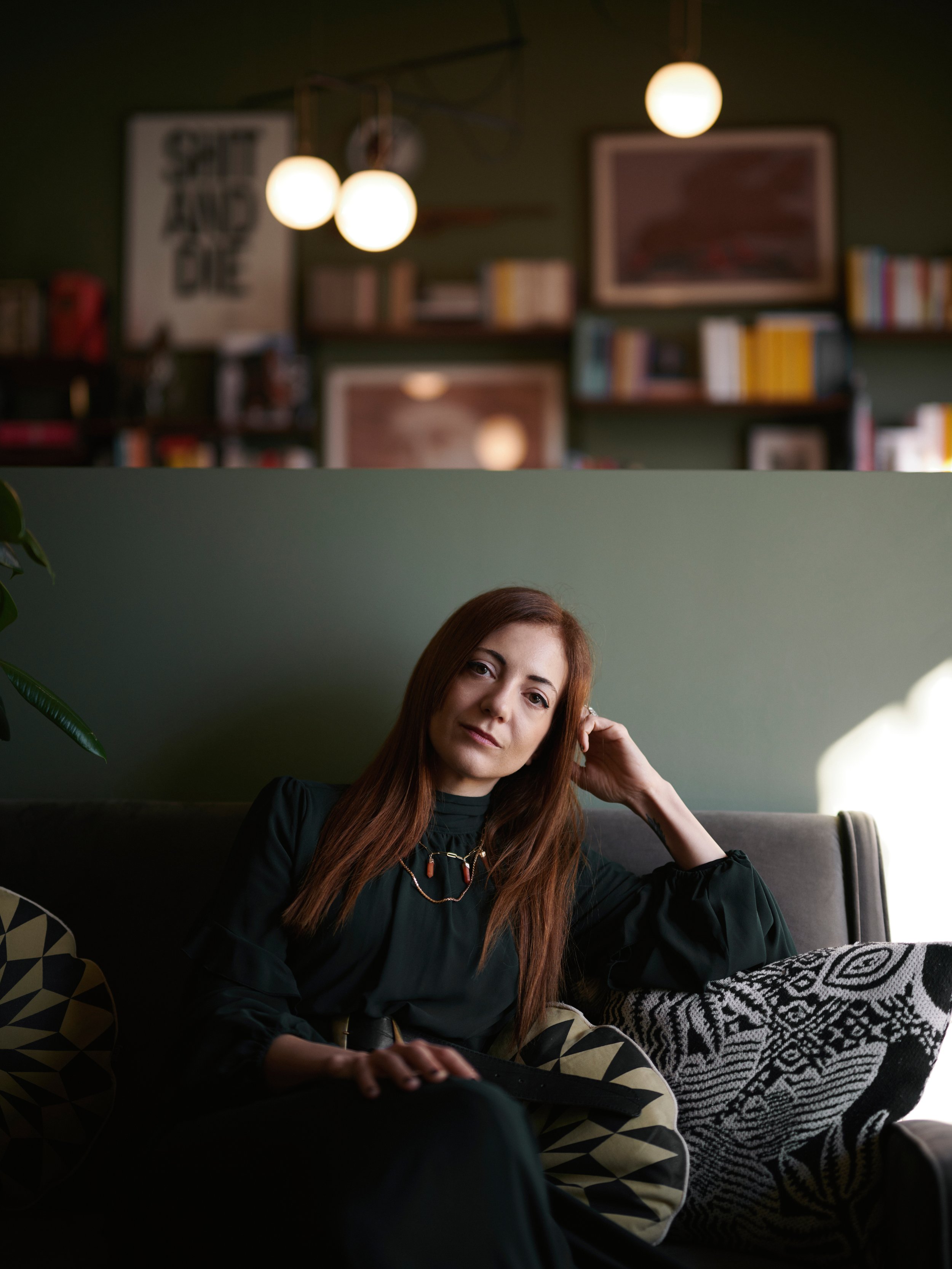Rafael Barros: Studio Rizoma
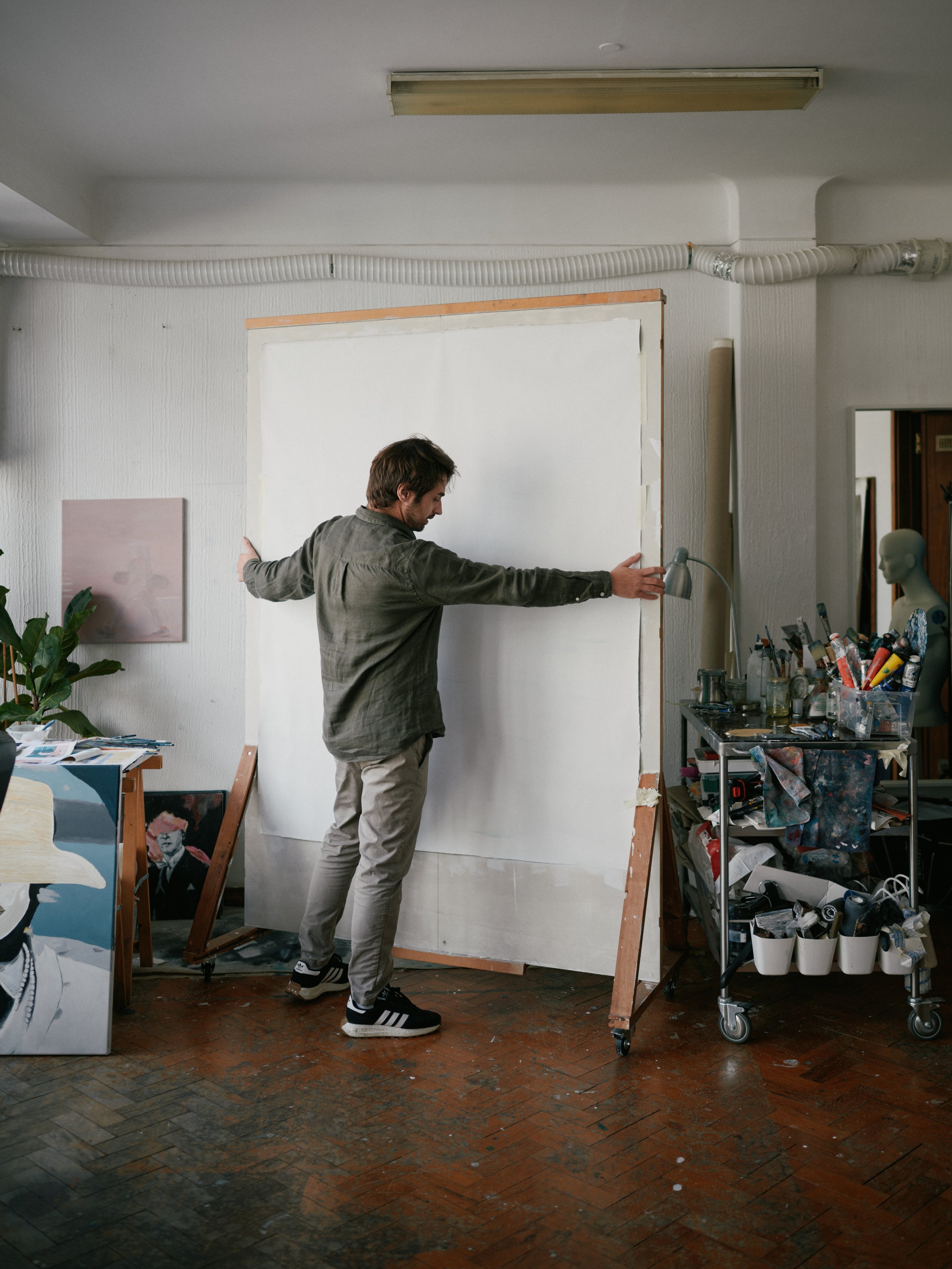
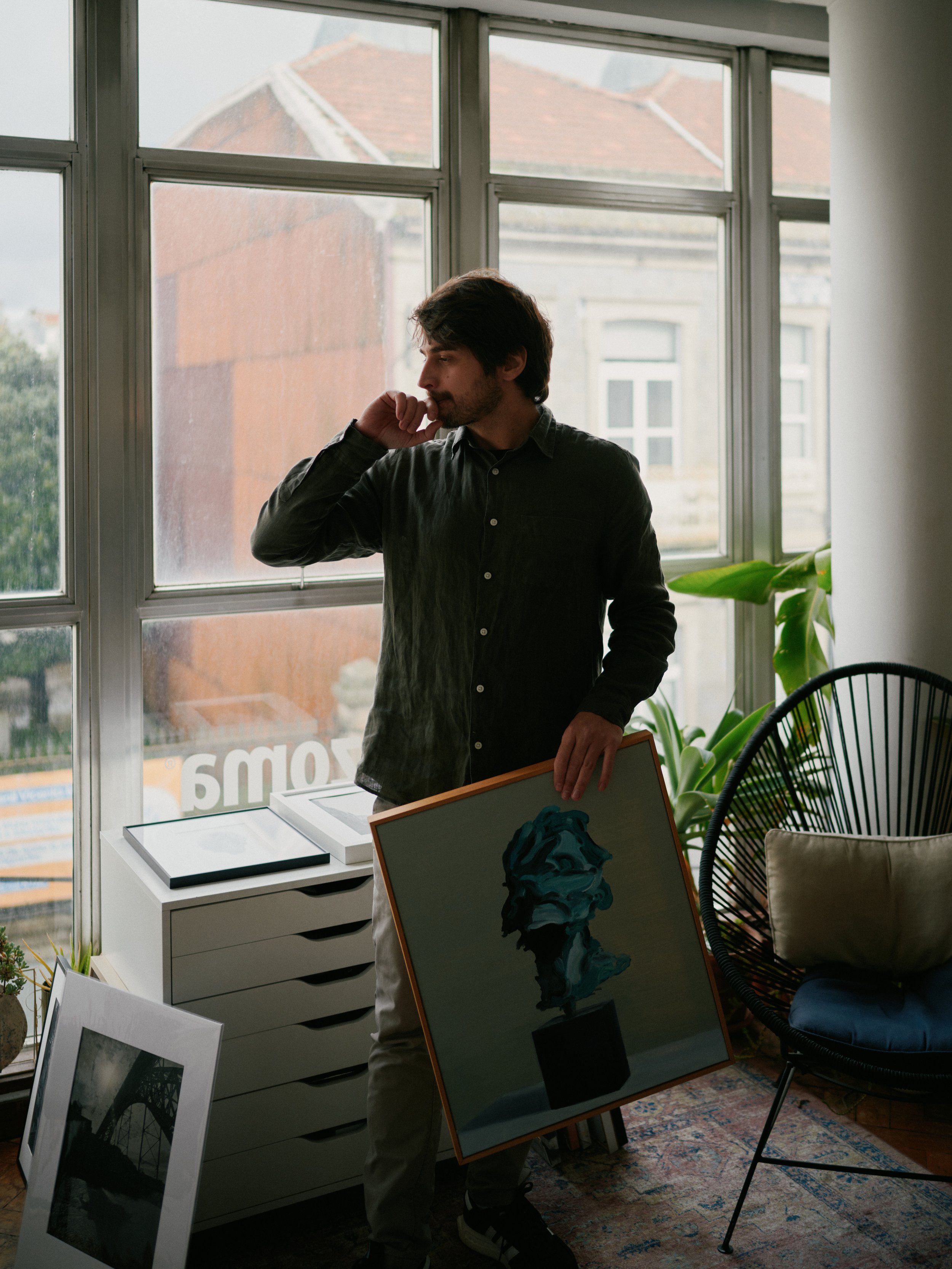
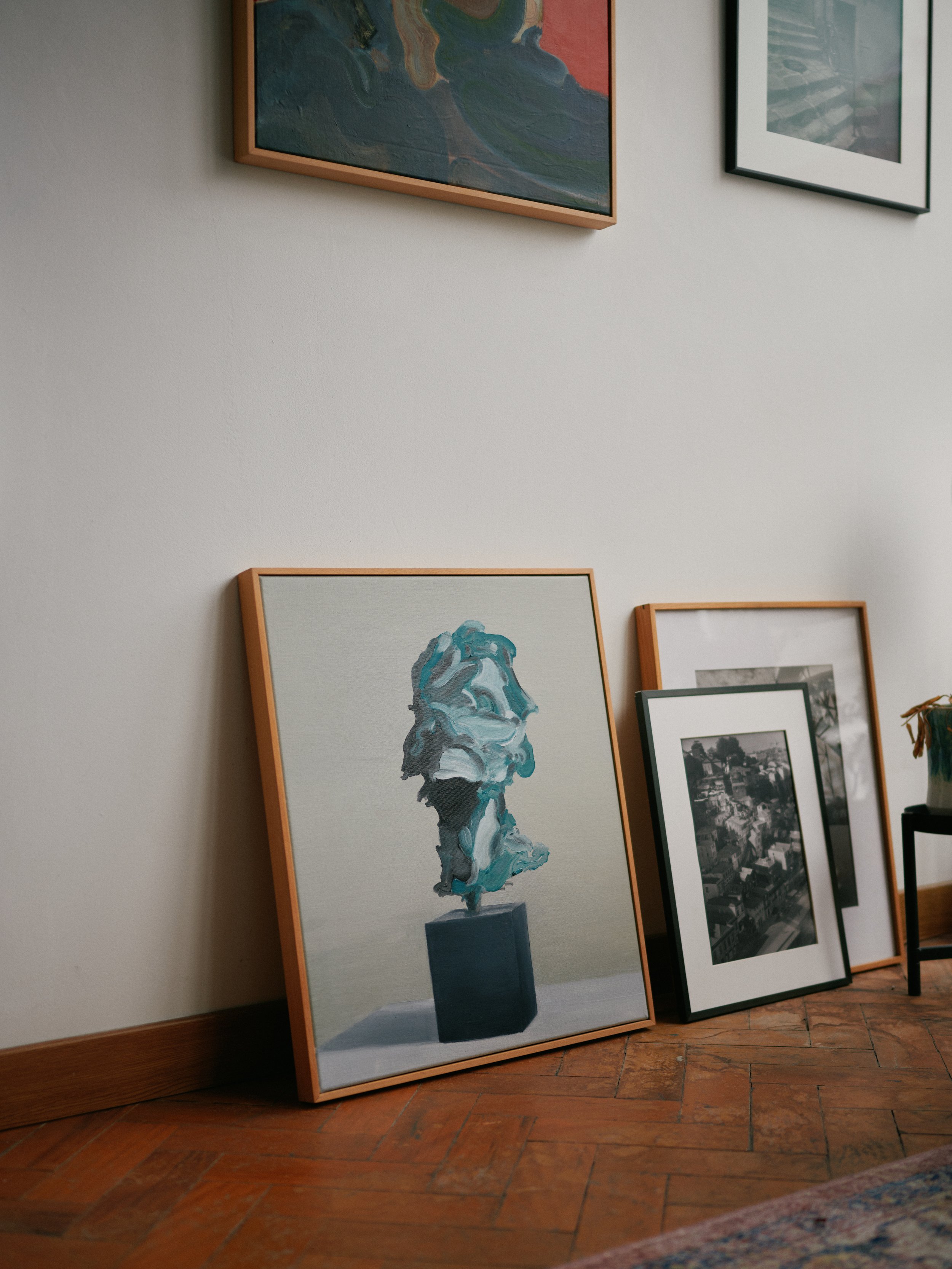
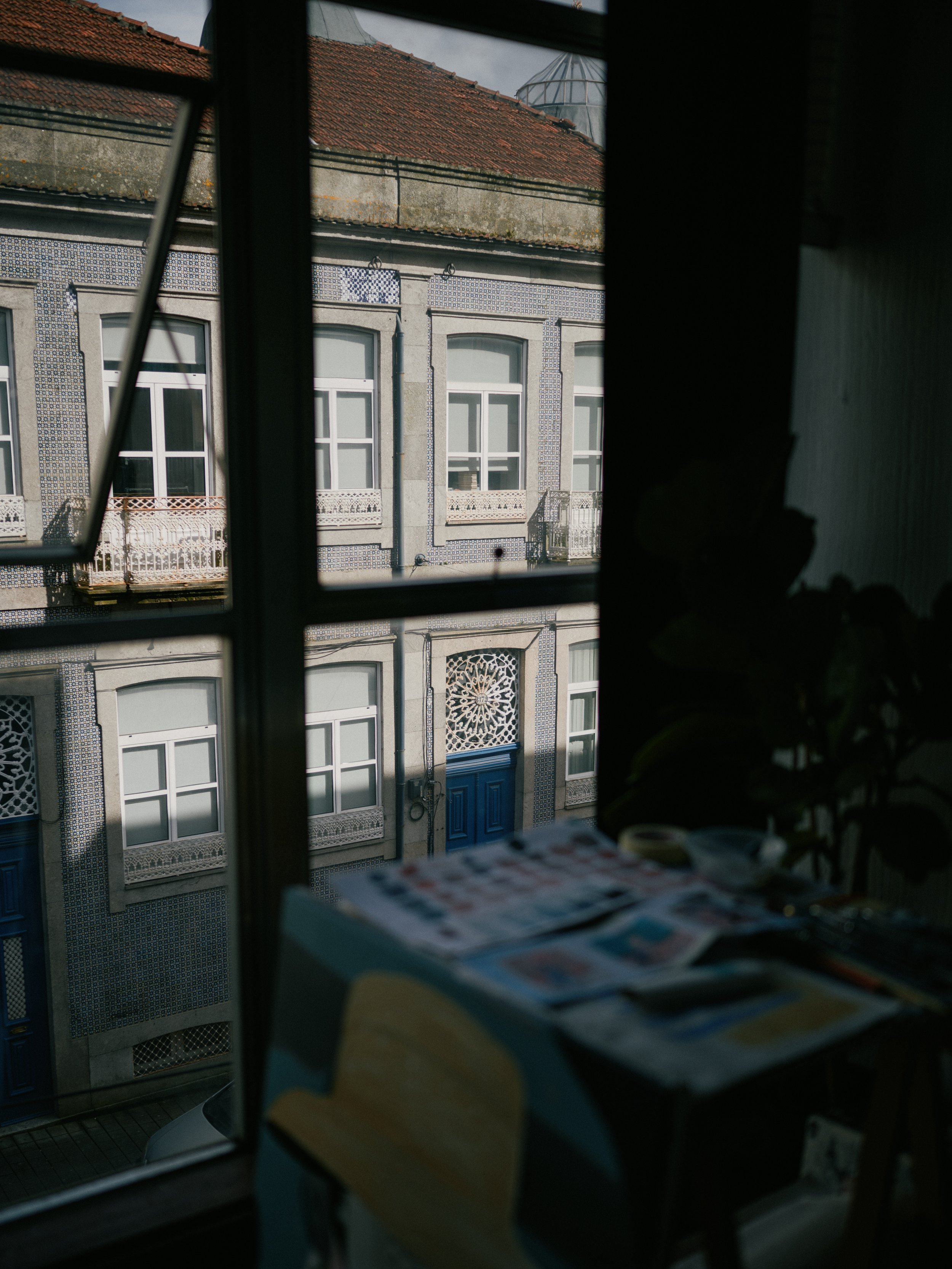
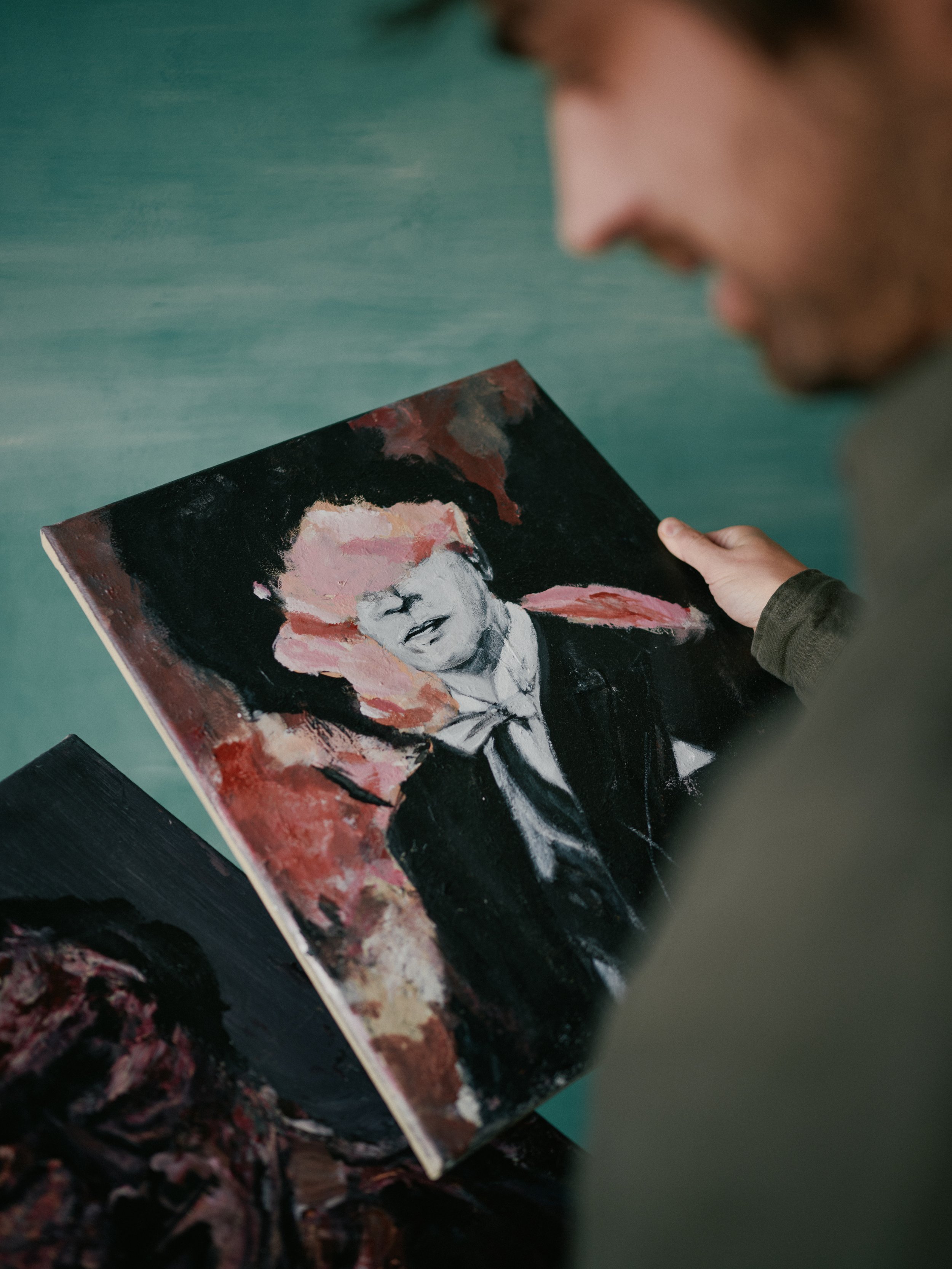
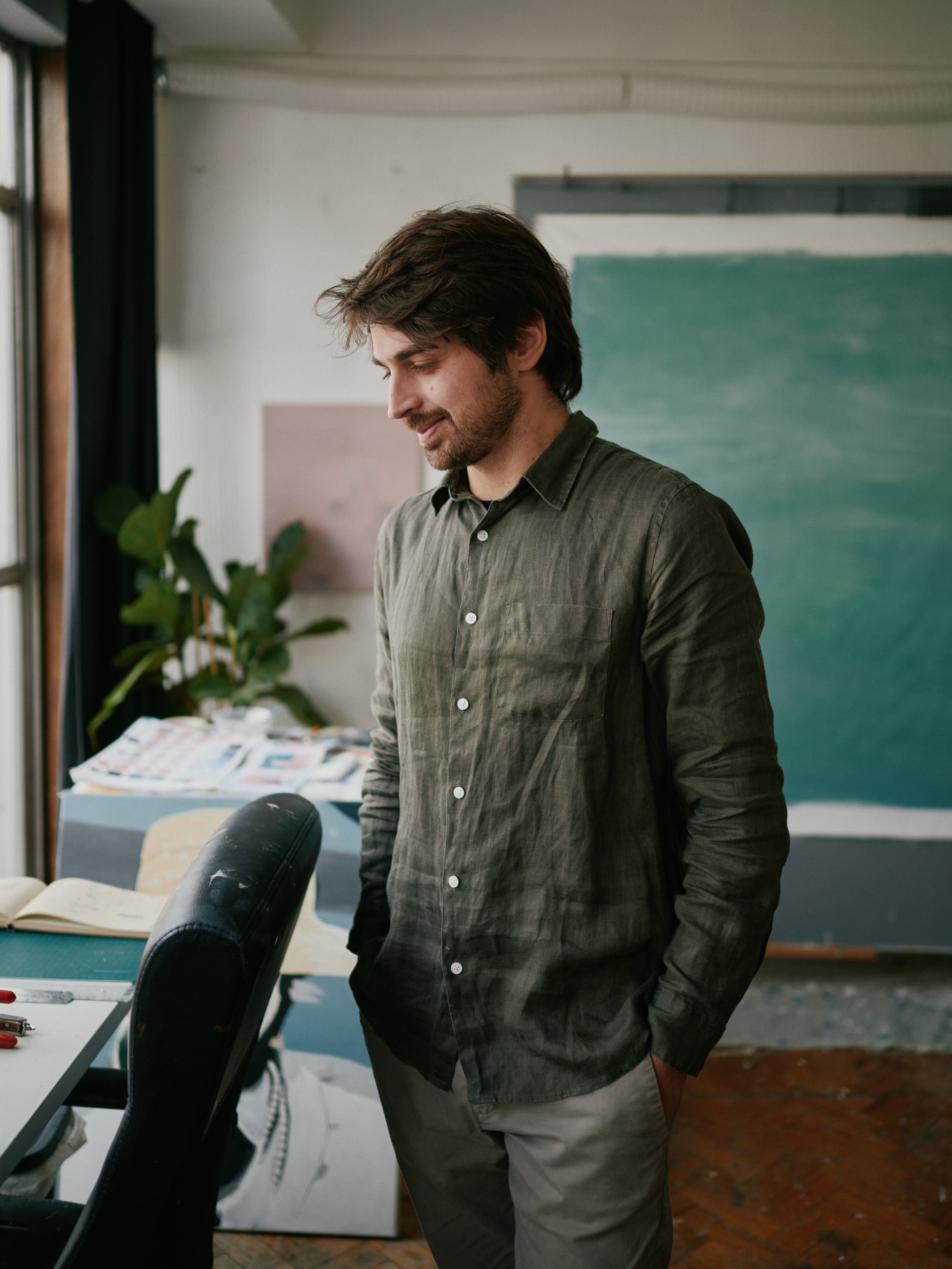
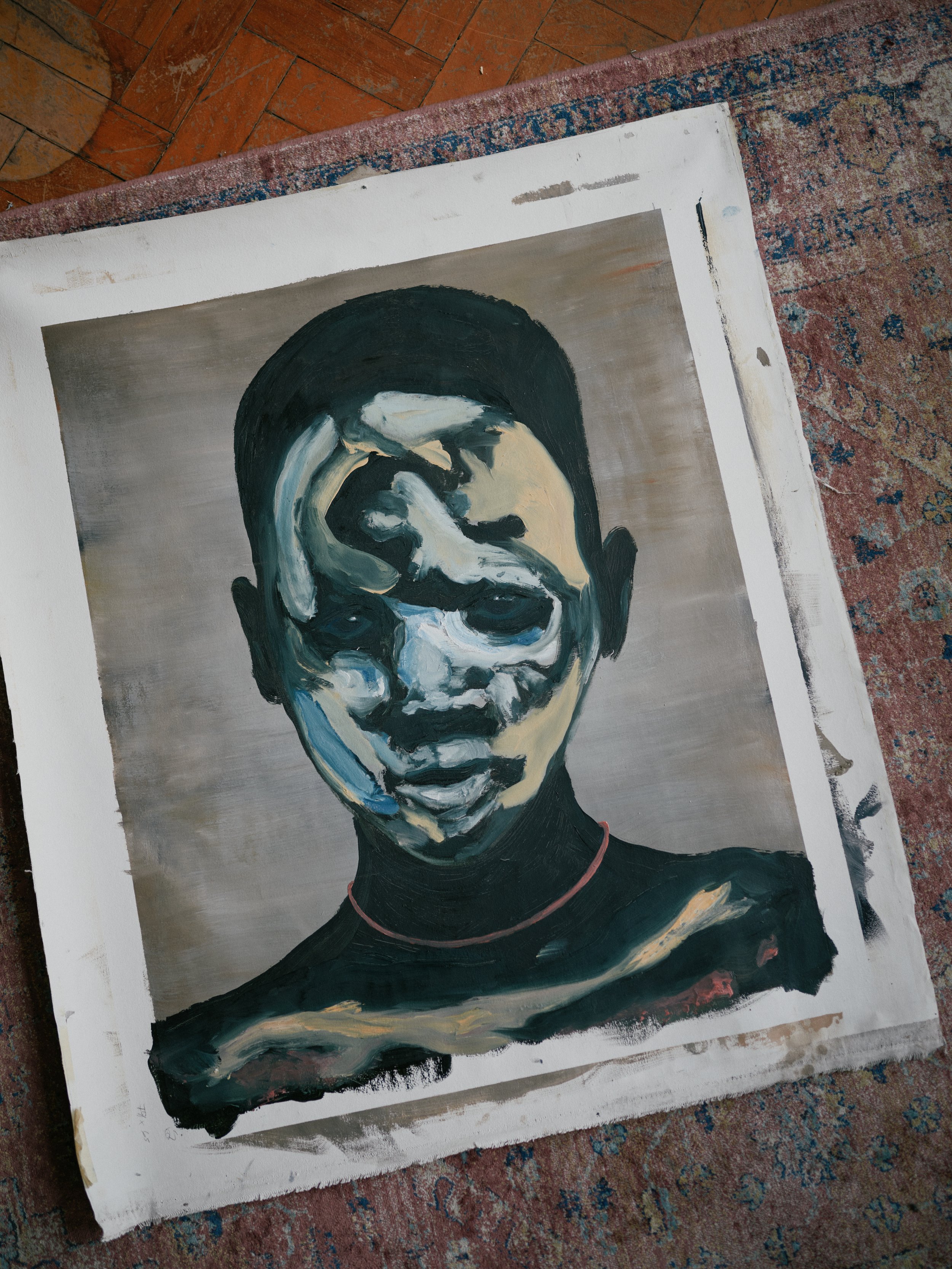



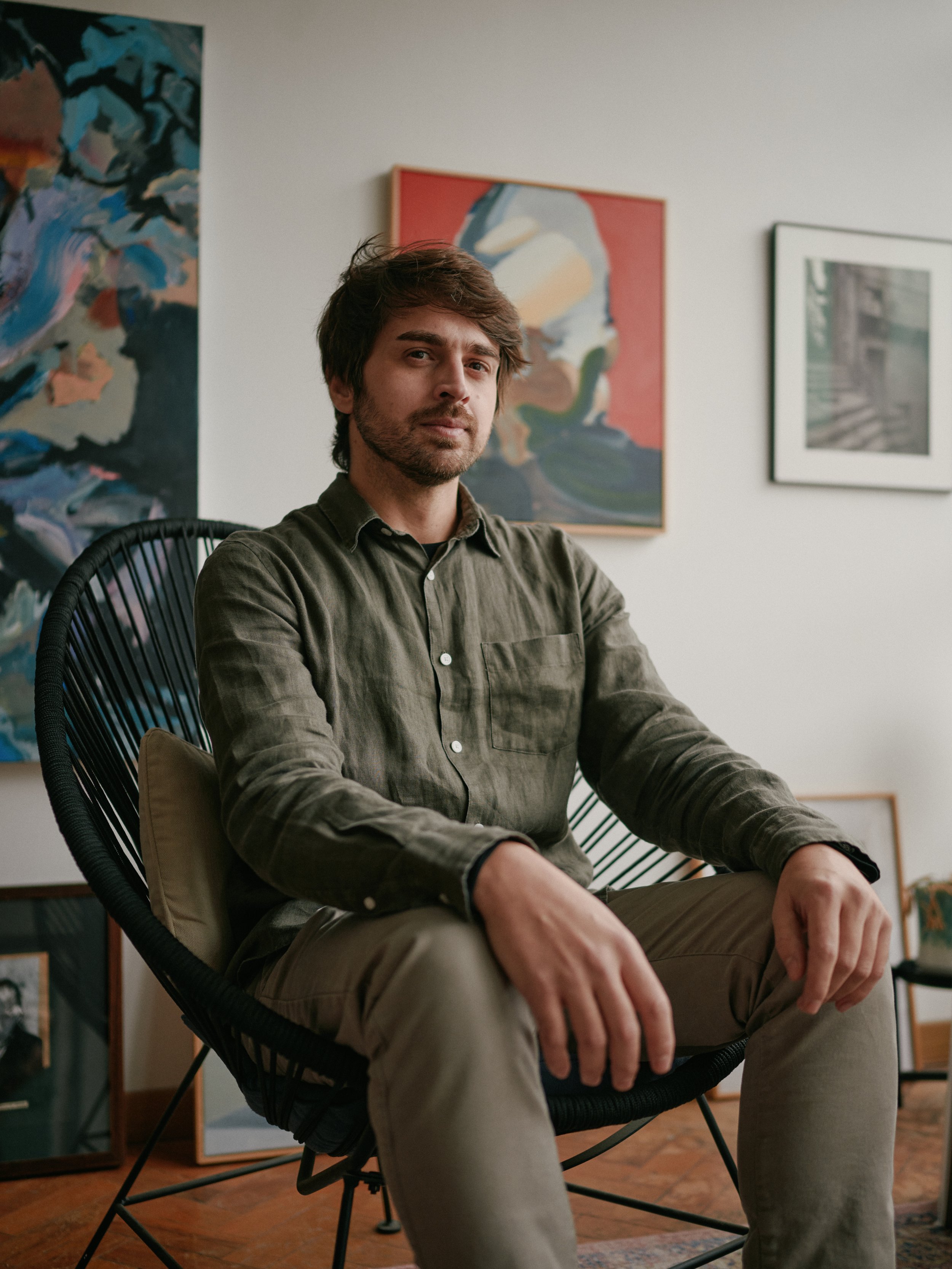
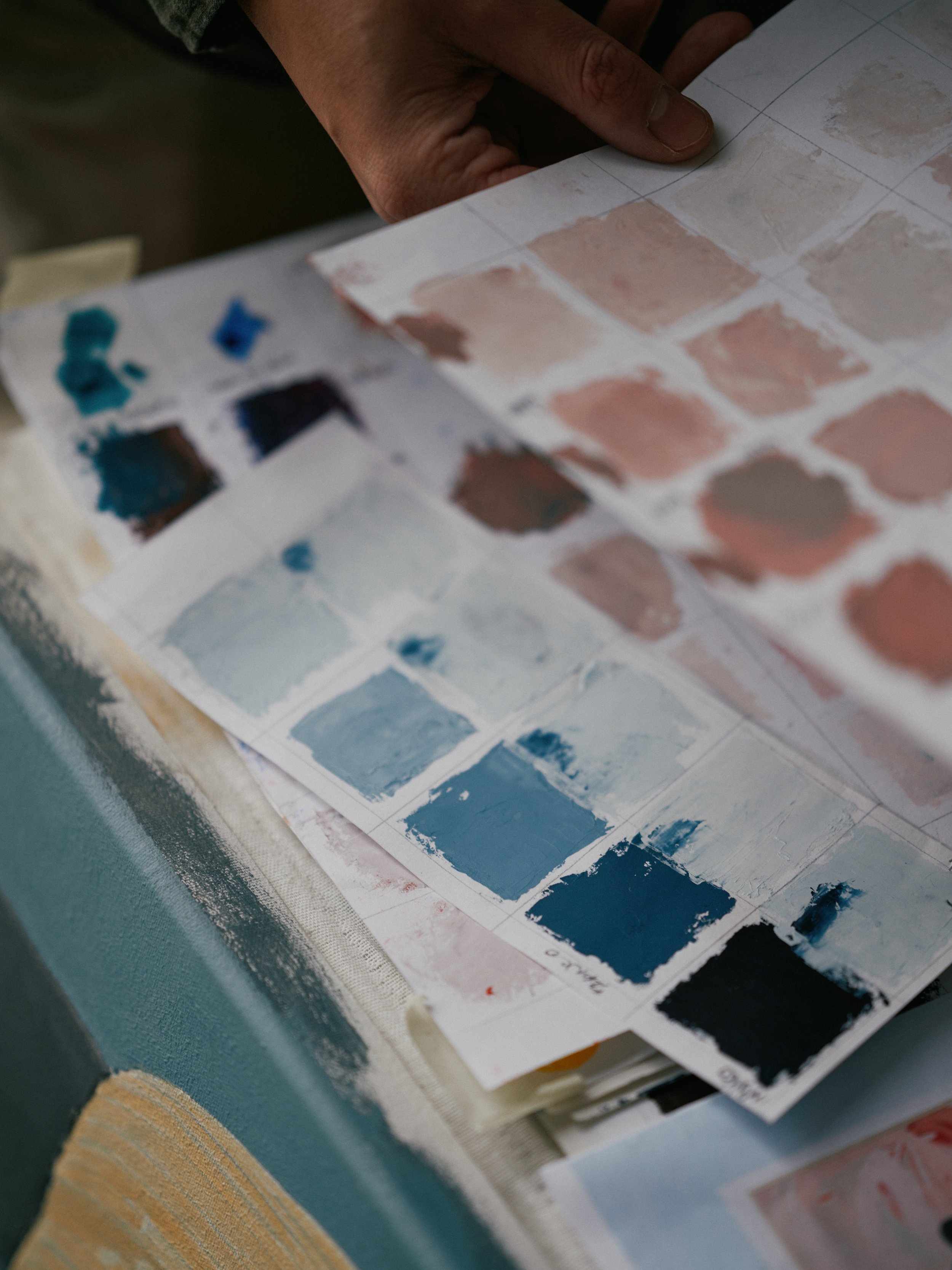
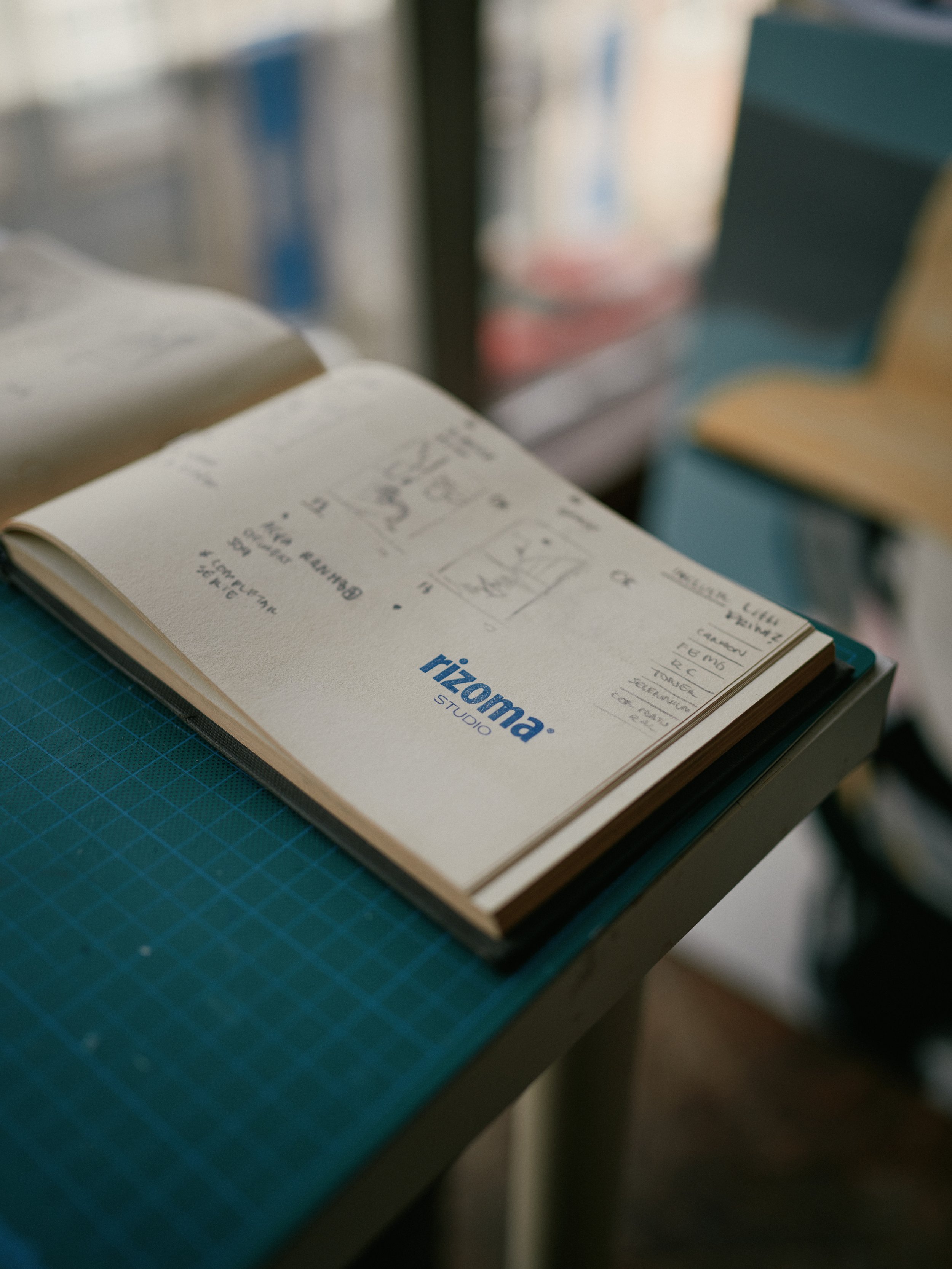
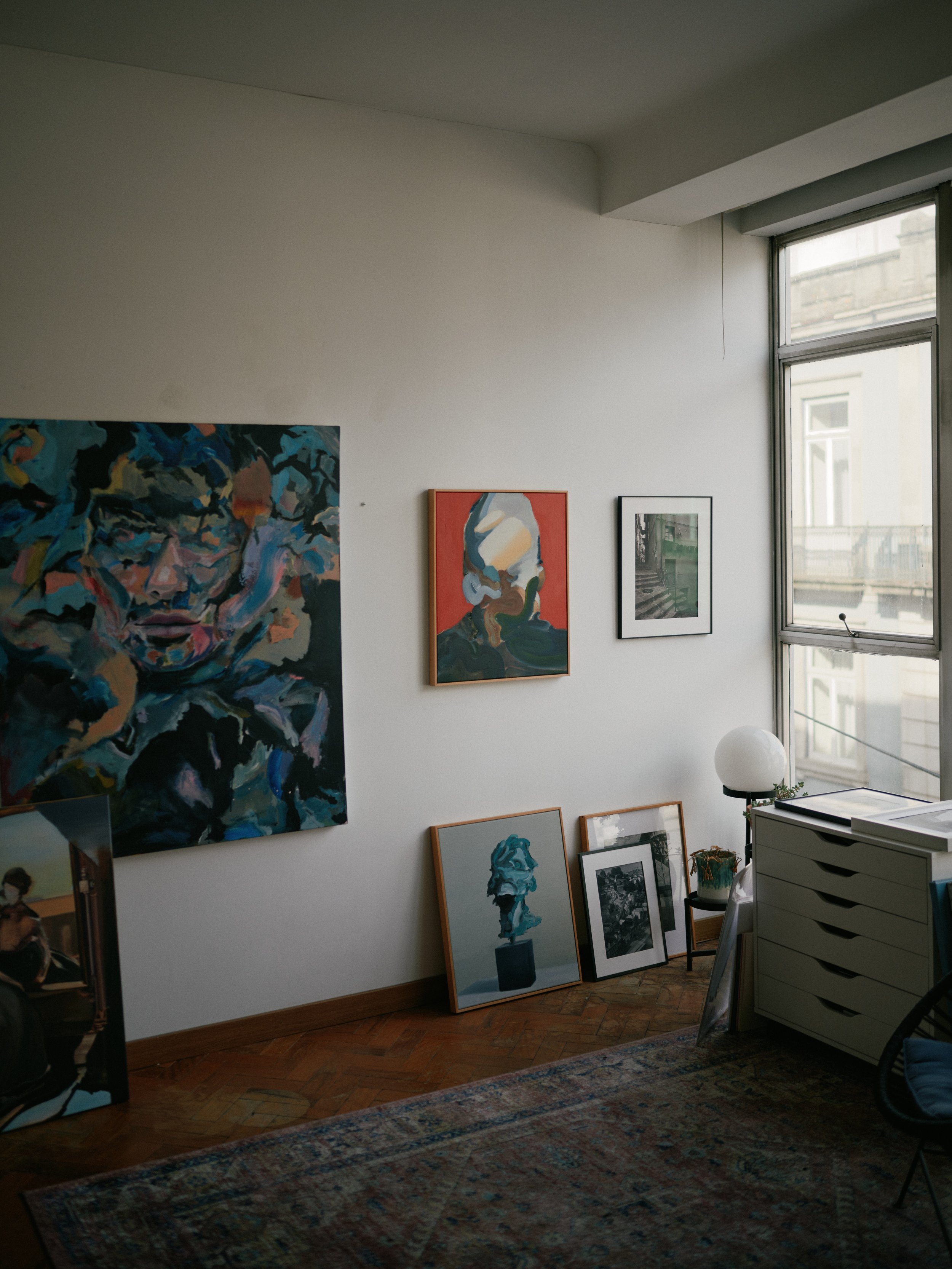
I met the artist Rafael Barros in March 2024, during a week of gloomy and rainy weather. Through the windows of his studio in Porto, bathed in the persistent rain, came a diffused, enveloping, and soft light that illuminated his canvases. On the opposite side, the entrance to the darkroom housed the tools for film development and various papers for analog printing. Rafael shared with me his background, born in Brazil, and his relocation to Portugal. Here, he founded Studio Rizoma, an independent multidisciplinary studio dedicated to artistic experimentation, fostering connections among artists, clients, and collectors. It was an opportunity to discuss the importance we both place on the blending of diverse disciplines and to delve into his research, which oscillates between the figurative and the abstract.
Photo: Lorenzo Morandi
Conversation: Lorenzo Morandi, Rafael Barros
LM:
Your roots proudly trace back to Brazil. What led you to move to Portugal, and how has this geographical change affected you?
RB:
I've always wanted to immerse myself in new cultures. I was drawn to Portugal due to its cultural affinities with my home country. It served as a starting point for me to explore Europe and, above all, a place I always want to return to, my Porto, now my home. I believe Portugal values the common good and provides access to diverse cultures. Here, I've encountered many people from Brazil, each with different stories from mine. Thus, I've been able to observe my homeland from an external perspective and investigate it through my artistic research. Brazil is an incredible yet profoundly unequal country. In the painting "Mursi," from 2021, I addressed a theme related to our roots, drawing inspiration from the words of anthropologist Darcy Ribeiro: "After all, who are the Brazilians? What matrices have nourished us? What traits distinguish us?"
LM:
You studied visual communication. I believe such studies profoundly influence the pragmatic and rigorous approach a creative takes towards each new project.
RB:
I studied visual communication, encompassing digital design and graphic design, as well as Fine Arts. Design exposed me to the procedural aspect of things, a more organizational methodology. The Fine Arts course expanded my thinking, granting me creative freedom and allowing me to deepen my knowledge, integrating my pre-academic research and work. Despite the significance of my studies in my journey, I believe it's my experiences and self-taught experiments that shape me daily as an artist.
LM:
Art, at least on the surface, appears to be freer. It doesn't necessarily require a client to commission it.
RB:
The client relationship always entails certain limitations stemming from the expectation of the "other." Hence, my artistic process unfolds independently of client demands, based on my expectations and desires, without the need for external approval. This approach enables me to connect with individuals moved by my genuine production. Throughout my work process, I strive to learn to construct, then deconstruct, and ultimately reconstruct. I once heard a phrase that encapsulates my thoughts on academia: "I believe this was one of the things school should have taught us: to relearn." Art allows me this freedom.
LM:
You showed me the darkroom, where you work on developing your films, using analog techniques that afford you complete control over every aspect of the photograph, akin to what one could achieve with image editing software. I must admit, your enthusiasm nearly convinced me, despite being a user and advocate of digital photography, to return to shooting in analog. What does this process truly mean to you? Do you think it might genuinely influence your perspective on and utilization of other mediums?
RB:
Working with analog photography allows me to "rationalize" decisions; I believe manual processes demand more discipline and attention. Simultaneously, it fulfills my need to be part of the creative process. This approach enables me to conduct experiments diverging from established procedures, altering recipes, and developing my personal technique. Photography often serves as a starting point in my process, as seen in the work "Erosão,” from 2021, part of the Vulcanoidades series, where I began with analog photography, subjecting it to chemical experiments before digitally printing it and applying it to a metal panel. One of my major influences is Cartier-Bresson, a photographer and painter. My art also heavily relies on this blend, such as in the piece “Os Antigos Retratos di Parede,” from 2018.
LM:
Your photography is in black and white, while your painting is in color. Is there a particular reason for this?
RB:
I consider black and white photographs timeless. Analog processes and black and white imagery prompt me to experiment with opposing polarities: black and white, light and shadow. Occasionally, I also incorporate color, which predominantly features in my paintings.
LM:
How does your technique relate to the content of your works?
RB:
For me, technique merely serves as a means to express inquiry. In my works, different techniques often blend together: photography merges into painting, and painting sharpens my photographic eye. I believe the key is to create a dialogue with the observer and suggest new experiences. Technique serves this purpose. Experiences, errors, and coincidences are integral to my creative process. My works are the outcome: layered works fueled by various expressive forms. Poetry, from which I constantly seek inspiration, also deeply intertwines in this process.
Related stories



